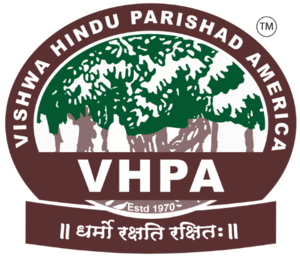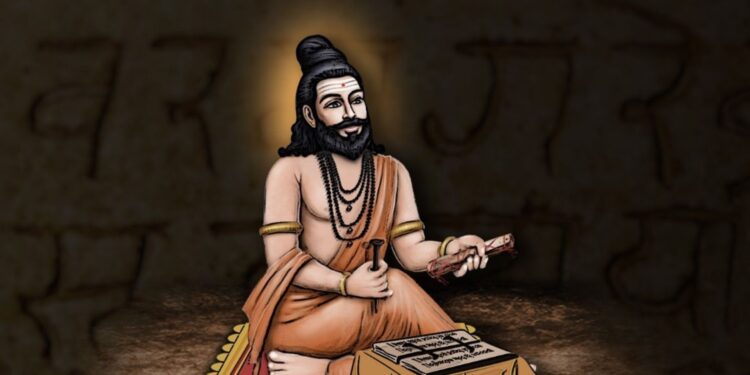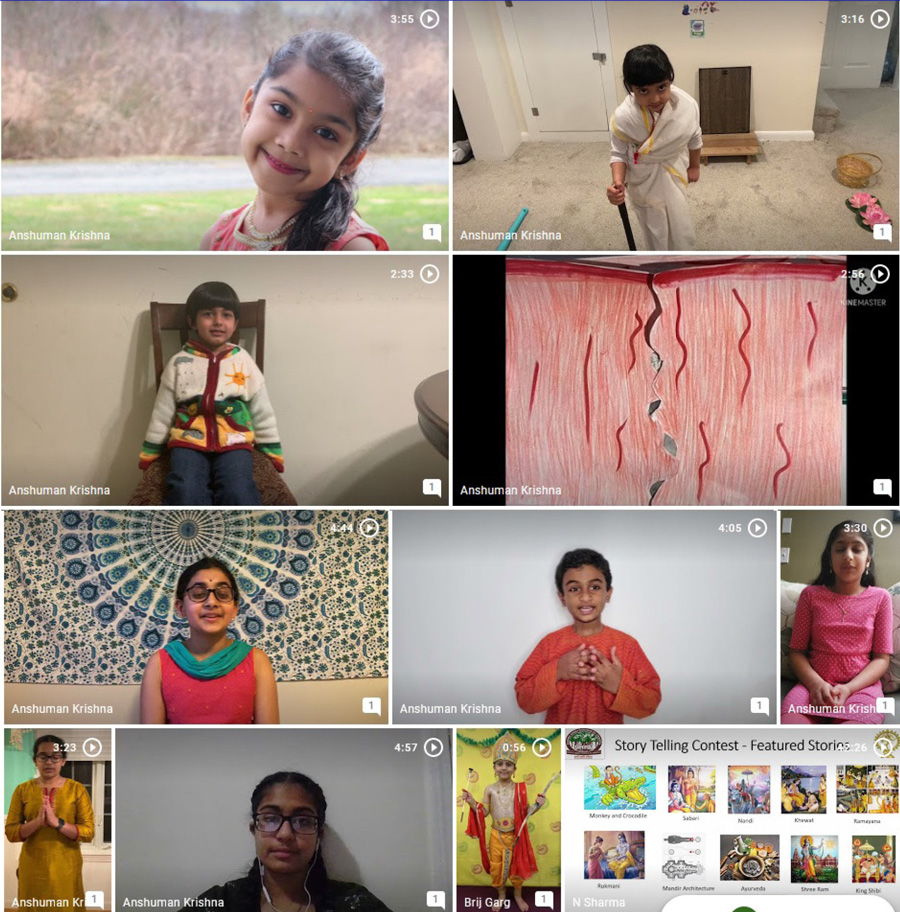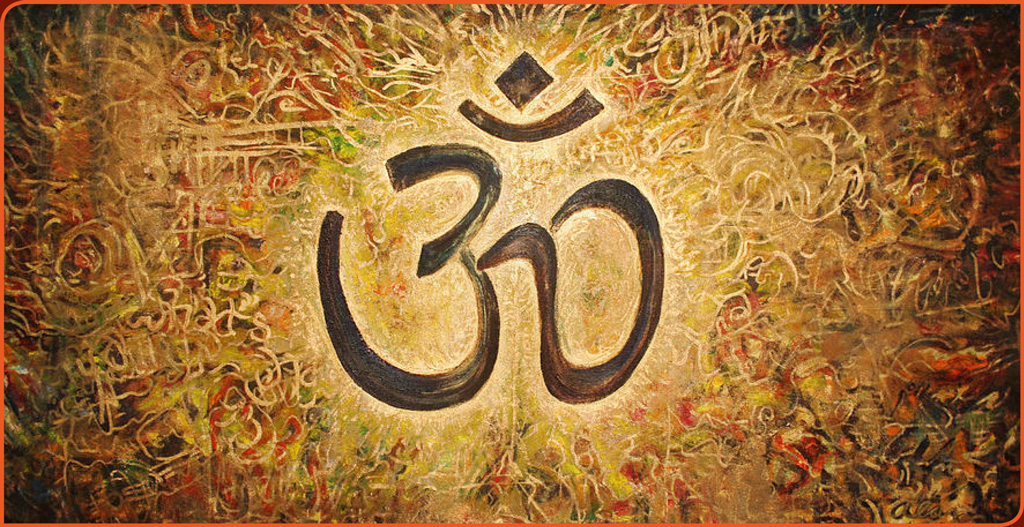Samskṛtam, often referred to as the “Gīrvāṇībhāṣā” or the language of the divines, stands as a testament to Bhārata’s rich cultural and linguistic heritage. Let us delve into the profound qualities that have made Sanskrit an indispensable part of human civilization. The essence of this language goes beyond its grammatical intricacies; it embodies the wisdom of the ages, serves as a conduit for scientific exploration, artistic expression, and philosophical contemplation, and continues to evolve with the changing times.
Sanskrit as the Language of Vedas: The Wisdom Ocean
The origins of Sanskrit can be traced back to the Vedas, the sacred texts that form the foundation of Sanātana Dharma. The profundity of these scriptures lies not only in their spiritual insights but also in the language in which they are composed. The Vedas are often considered to be ‘apauruṣeya’1, not of human origin, but of divine inspiration. Therefore, the language of the Vedas, Sanskrit, becomes a vehicle that carries the essence of cosmic knowledge and eternal truth, making it a timeless reservoir of wisdom. Bhartṛhari, in his famous work Vākyapadīya, explains the nature of the Supreme Brahman as follows,
अनादिनिधानं ब्रह्म शब्दतत्त्वं यदक्षरम् |
विवर्तते अर्थभावेन प्रकृति जगतो यतः ||
anādinidhānaṃ brahma śabdatattvaṃ yadakṣaram |
vivartate arthabhāvena prakṛti jagato yataḥ ||
That beginningless and endless One, the imperishable Brahman, of which the essential nature is the Word, which manifests itself into objects and from which is the creation of the Universe.
– [Vākyapadīya, 1.1]
The verses of the Vedas are intricately woven with poetic meters called ‘chandas’, ensuring their oral transmission across generations. In this way, the universal truth encoded in the Vedas are revealed to the ‘Mantradraṣṭaras’2 when they are spiritually well attuned to the Supreme through years of austere practices and contemplation of the truth.
1 Those scriptures which were not written by men
2 The “seers” of the hymns. Ṛṣis were called by this name as the Vedas were revealed to them.
Sanskrit as the Language of Science
The greatness of Sanskrit extends to the realm of science as well. Ancient Indian scholars employed Sanskrit to document scientific discoveries, innovations, and theories. There were special linguistic tools specific to Sanskrit, which are used for conveying complex ideas in the poetic metrics and in condensed form. A few of them are,
Kaṭapayādi Saṃkhyā – The Kaṭapayādi system is an ancient Indian method of using alphabetic syllables to represent numerals, aiding in remembering numbers as words or verses. By associating multiple letters with a numeral and excluding some letters, this system allows the creation of meaningful words from numbers for improved recall.
Sūtras – A sūtra is a condensed rule captured in a handful of words or syllables, serving as the core foundation around which teachings of rituals, philosophy, grammar, or any domain of knowledge can be intricately woven by succinctly conveying the message.
Bhūta Saṃkhyā – The Bhūta Saṃkhyā system involves representing numbers in Sanskrit using common nouns with inherent numerical meanings. For example, the concept of “two” was linked with the term “eye,” since everyone possesses two eyes. Consequently, any Sanskrit word signifying “eye” (e.g., netram) was employed to represent the number “two.”
Employing these highly effective techniques, the ancient sages and scholars of Bhārata showcased countless remarkable works in diverse domains like astronomy, grammar, philosophy, medicine, legal treatises, and ethics. These enduring contributions continue to serve as a wellspring of inspiration for the knowledge traditions of Bhārata and beyond.
Sanskrit: The Best Language for Poems and Literature
The poetic and aesthetic qualities of Sanskrit have rendered it a prime choice for artistic expression. The intricate meters and rhythmic patterns inherent to Sanskrit create a musical quality that resonates through its verses. The classical epics like the “Rāmāyaṇa” and the “Mahābhārata” and the classical literature of brilliant poets like Kālidāsa’s “Śakuntalā”, Bhāsa’s “Svapnavāsavadattam”, Māgha’s “Śiśupāla Vadha”, and Dandin’s “Kāvyādarśa” are a testament to this. The verse that follows elucidates the greatness of Sanskrit poets:

उपमा कालिदासस्य भारवेरर्थगौरवं |
दन्डिन: पदलालित्यं माघे सन्ति त्रयो गुणः ||
upamā kālidāsasya bhāraverarthagauravaṃ |
danḍina: padalālityaṃ māghe santi trayo guṇaḥ ||
Kālidāsa’s renown lies in his adept use of similes (metaphors), Bhāravi’s verses resonate with profound meanings, Dandin’s writings exude exquisite beauty, and Māgha embodies the fusion of all these three attributes.
As elucidated here, Māgha’s brilliance serves as an embodiment of the resplendence found within Sanskrit poetry, vividly manifested in his magnum opus “Śiśupāla Vadha.” As showcased in the verse –
जजौजोजाजिजिज्जाजी तं ततोऽतितताततुत्।
भाभोऽभीभाभिभूभाभू रारारिररिरीररः॥
jajaujojājijijjājī taṃ tato’titatātatut ।
bhābho’bhībhābhibhūbhābhū rārārirarirīraraḥ ॥
Subsequently, the victorious warrior, adorned with heroic courage and having conquered the haughty adversaries, radiating a luminosity akin to stars and the conqueror of fearless elephants, initiated the battle with his foe positioned on a chariot.
His work is a testament to his unique poetic prowess. The language’s innate beauty and grace allow poets to craft verses that not only convey profound emotions but also elevate the soul through their artistic splendor.
Sanskrit as the Best Language for Philosophical enquiry
Sanskrit, a language of unparalleled depth and precision, is the perfect conduit for philosophical discourse and logical exploration. It hosts the masterpieces of ancient philosophers like Ādi Śaṅkarācārya, Rāmānujācārya, and Madhvācārya, who wielded its intricate structure to navigate metaphysical intricacies. The profound verse, ‘Tat Tvam Asi,’ nestled within the 6th chapter of Chāndogya Upaniṣad, exemplifies Sanskrit’s potency by inviting diverse interpretations across different traditions and eras. This verse becomes a canvas for philosophers to weave connections between the Individual Soul and the Supreme Soul, spanning the spectrum from Dvaitic to Advaitic viewpoints. In this realm, Sanskrit becomes more than words; it shapes profound contemplation and fuels the meditative journey toward spiritual enlightenment.
The language’s rich lexicon and nuanced grammatical rules allow philosophers to dissect intricate concepts with unparalleled precision. “Brahma Sūtras,” “Yoga Sūtras,” and the writings of the Nyāya and Mīmāṃsā schools stand as towering pillars of philosophical thought, elegantly presented within a linguistic framework that captures even the subtlest nuances of profound ideas. Sanskrit, as the divine palette of expression, continues to inspire seekers, inviting them to delve into its wisdom and embark on a transformative spiritual odyssey.
We honor the Gīrvāṇa language that spans time and influences diverse aspects of human life. As a wellspring of wisdom, scientific inspiration, artistry, and philosophical exploration, Sanskrit unites past and present, nurturing our heritage while propelling innovation. Just as a river sustains the lands it touches, Sanskrit’s legacy enriches minds, cultures, and souls worldwide. Beyond linguistics, it fuels intellectual curiosity, promotes cultural unity, and underscores the enduring human connection across eras.
Source: https://vediccosmos.com/sanskrits-timeless-resonance-a-celebration-of-science-poetry-and-wisdom/




![[ India Today ] Ohio senator JD Vance thanks wife, a Hindu, for helping him find Christian faith](https://hinduvishwa.org/wp-content/uploads/2024/06/us-senator-jd-vance-reveals-how-his-hindu-wife-usha-helped-him-find-his-christian-faith-image-re-272530504-16x9_0-120x86.webp)









